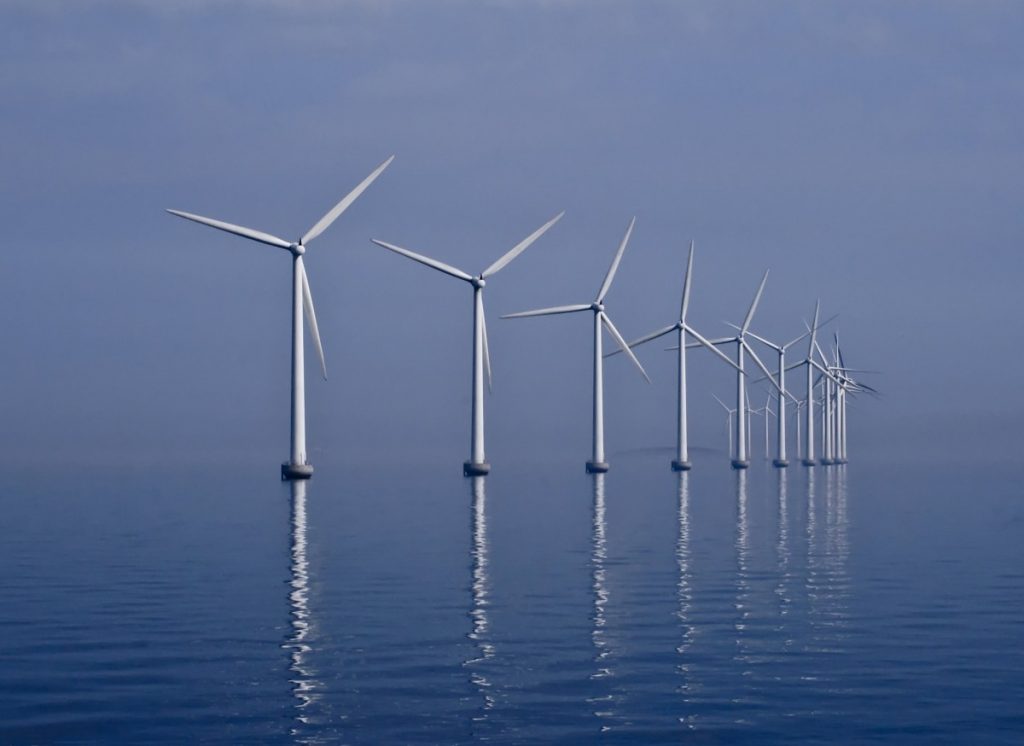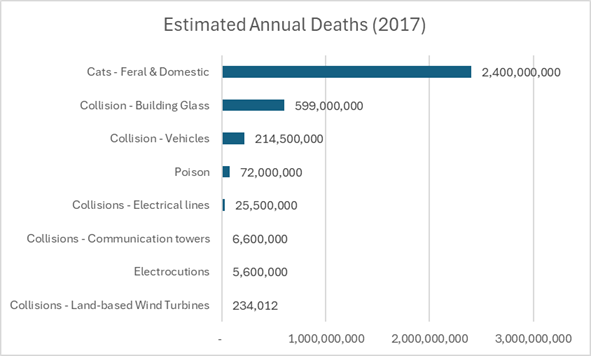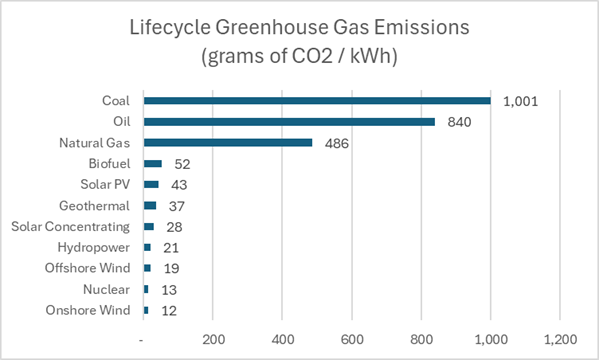
Offshore wind has been a hot topic in recent months, and there are misconceptions and misunderstandings causing some to hesitate to support its deployment. Here, we address common questions about offshore wind.
Offshore Wind and Wildlife
Do offshore wind farms harm marine mammals?
Misinformation about the impacts of offshore wind on marine life is being funded and spread by the fossil fuel industry in an attempt to slow down renewable energy development. Concern for marine life is one of the primary messages anti-renewable energy groups are pushing to try to stop offshore wind in its tracks.
Fortunately, the truth is that offshore wind has far fewer risks to local marine life than the fossil fuel energy sources it is replacing. According to NOAA, there is no scientific evidence linking offshore wind development to whale deaths or strandings. While construction does cause sonic disturbances, they are carefully managed to protect nearby marine life:
- High-frequency, low-energy sonar used for surveying seabed surfaces dissipates quickly and does not harm marine mammals.
- The sounds of driving pilings during turbine installation and construction are mitigated through protective measures like bubble curtains and seasonal restrictions.
Marine biologists have concluded that neither of these activities causes serious injuries to sea mammals even if directly in the path of the survey sonar, but to take extra care, protective measures are in place preventing surveying while any mammals are nearby. Each project also has its own mitigations for sound attenuation while pile driving, including bubble curtains and seasonal restrictions. This is in contrast to oil and gas ocean exploration that uses more powerful sonar to penetrate deep into the rock below the seabed, causing danger for sea creatures in a wider radius during surveying. Compared to the environmental toll of oil and gas exploration, extraction and spills, offshore wind is a far safer choice for marine ecosystems.
How harmful are wind turbines to birds?

Bird deaths are a concern of wind turbine manufacturers and environmentalists, and new features are being added to turbines to help birds avoid the blades. However the impact on bird populations is relatively low compared to estimates for bird kills by cats and vehicle and building collisions (see graph). Estimates range from 80,000 to 500,000 birds that die from being struck by wind turbine blades each year. Offshore contributions to this total are estimated to be lower than onshore due to seabird flight patterns and proximity to land. When it comes to seabirds, a 2023 study that mapped the flightpaths of thousands of birds around wind turbines in the North Sea found that they deliberately avoid wind turbine rotor blades offshore. Most importantly, during two years of monitoring using cameras and radar, not a single bird was recorded colliding with a rotor blade. According to the US Fish & Wildlife Service, the top 7 reasons for bird deaths cause 14,200x more deaths annually than onshore wind turbines, which tend to kill more birds than their offshore counterparts.
How will Offshore Wind impact the fishing industry?
There are impacts to fishing from any ocean development. Chief among this is the space occupied by the windfarms. It is dangerous for larger vessels to trawl through windfarms and protective buffers may not allow fishing at all. In addition, several proposed wind sites will also occupy NOAA scientific research sampling that has occurred for decades. This information is critical to managing fisheries. Finally, the effects of putting structure in these areas is not fully known. To address the first problem NOAA is working on a regional mitigation fund to address lost fishing opportunities. Two, there are current studies looking at the viability of hook and line sampling techniques within windfarms to continue collecting important fishery data. Finally, the National Marine Fisheries Service has designated essential fish habitat out in the ocean. A recent lease area encompasses important cod nursery areas and NOAA has requested modifications to the placement of monopiles to avoid the more important fishery habitat. We support placing these farms in the most appropriate locations to avoid impacts to fisheries.
Of far greater risk to fisheries overall is the adsorption of carbon into the ocean and the increasing ocean temperatures generated by fossil fuels. There have been 6000 oil structures erected in the Gulf of Mexico with 3500 still standing. There have been years of boat traffic, construction, oil spills and fish community changes associated with this development. On top of this they are spewing carbon into the air. Windfarms won’t be completely impact free but the risk to fisheries is far less than offshore oil drilling.
Materials and Waste
After the blade failure near Nantucket this summer, what is the risk of blades falling off in offshore wind farms?
Blade failures, while unsightly, are far more infrequent and come with fewer risks to humans and wildlife than oil spills that come with the fossil fuel energy sources they are replacing. With approximately 70,000 blades in operation on wind turbines around the US, there are only about 18 failures per year. While blade materials are considered non-toxic in finished form, oil spills are toxic to humans and wildlife, and gas leaks emit a potent greenhouse gas that has 30-100x greater warming effect than carbon dioxide. When blade failures do occur, the cleanup is relatively quick and harmless, as the blades are made of the same material as boat hulls. Comparing that to the devastating environmental impacts of fossil fuel energy production failures like oil spills and gas leaks, offshore wind is a much safer alternative.
How are blades disposed?
85-90% of a wind turbine is recyclable when its lifecycle ends. While blades are infrequently recycled due to the cost of separating materials, their high strength to weight characteristics make them great material for repurposing, and new uses are being devised including pedestrian bridges, roofs for bicycle stands and bus stops, playground structures, and grinding up the material for use in concrete and roadways. New materials are also being used in blade construction, some of which are more recyclable, and others which are greener like bioplastics.
What is the lifespan of an offshore wind farm?
The lifecycle of modern commercial wind turbines is 20-25 years, and they are efficient and tolerant of weather. The lifespan of a natural gas power plant is about 22 years. According to National Grid, offshore wind farms operate year-round in a broad range of windspeeds as low as 7MPH and as high as 56MPH, and are designed with safety features that enable them to weather extreme wind conditions like hurricanes.
Offshore Wind and the Energy Sector
Will offshore wind development impact our electric bills?
Yes. Offshore wind will bring consistency to energy prices in CT by avoiding the big cost swings we see seasonally with natural gas. Offshore wind will also address New England’s winter reliability issues. Offshore wind is a stable and consistent energy source with no fuel costs. Offshore wind also produces the most energy in the winter when natural gas supplies are constrained due to the competing demands of power generation and home heating. These constraints currently require relying on costly imports of liquified natural gas and oil to meet winter electricity demands. Offshore wind provides a cost-effective alternative when it’s needed the most. Analysis by the Union of Concerned Scientists has found that meeting the New England states’ existing targets for offshore wind development would have virtually eliminated the demand-driven risk of a winter blackout over the preceding 22-year period while lowering costs.
Is wind power effective at reducing greenhouse gas emissions?

Wind power is one of the lowest emitting energy generation sources available per unit of energy generated. A US DoE Wind Technologies Office report in August 2024 shows that offshore wind energy has ~26x lower emissions than natural gas, which is CT’s largest source of energy generation today. Wind energy also eliminates the emission of other air pollutants, which include sulfur dioxide, nitric oxide, nitrogen dioxide, and particulate matter. These pollutants cause cancer and respiratory illnesses like asthma and bronchitis.
How does offshore wind compare to onshore wind?
Onshore wind is proven and widely deployed in the US. Communities, residents, and corporations who want to install their own can do so with good success. However, here is why Save the Sound more strongly supports offshore wind farms:
- Winds are both stronger and more consistent offshore. The efficiency factor of wind energy generation increases with consistency more than just wind speed.
- Open water facilitates larger projects which are necessary for utility-scale energy generation. In population-dense regions like the northeast, offshore wind is more viable for large-scale deployments.
- Building on the prior point, offshore projects have a lower impact on land ecosystems, and to some extent even help marine ecosystems by acting as artificial reefs.
- Finally, with windfarms being located 15+ miles offshore, there is less visual disruption for communities and no noise from the ongoing operations.
Is wind energy generation technology mature and proven?
Wind farms are a proven and highly effective solution for renewable energy generation. Here in the US, onshore wind power has been generating clean power in most areas of the country for decades. Utility-scale farms have existed in Iowa, California, South Dakota, Oregon, Texas and other states for nearly 2 decades. Iowa generates over 60% of its power needs from wind and Texas alone has over 2 gigawatts (GW) of capacity in production. Texas’ Roscoe Wind Farm was the largest in the world when completed in 2009. Over 8.5 GW of capacity was added in the US in 2022 alone.
While utility-scale offshore wind development is fairly new here in the US, many large-scale offshore wind farms are already operational around the world, such as the 1.2 GW Hornsea Project in the UK and the Kincardine floating wind farm in Scotland. International projects have been successfully incorporated into the grid to power houses and businesses, interconnecting to the transmission and distribution system. As offshore wind expands in our region, we will need to improve our transmission system, something that Northeastern states and the federal government are currently working on.
Through the decades, offshore wind technology has seen significant advancements in turbine design, materials, and installation techniques.
In the US, the Block Island Wind Farm has been operational since 2016, and New York’s South Fork Wind became operational in May 2024, generating enough electricity to power 70,000 homes annually. Additional new projects are coming online each year, including Vineyard Wind 1, which began delivering power this year, and Connecticut and Rhode Island’s 704 MW Revolution Wind, New York’s 924 MW Sunrise Wind, and the 2.6 GW Coastal Virginia Offshore Wind project scheduled to come online in 2026. These projects demonstrate the feasibility and scalability of offshore wind technology.
The cost of offshore wind energy has decreased significantly as it has matured due to technological advancements and economies of scale. According to energy.gov, the estimated public health benefits, climate benefits, and value to the grid are worth more than five times the cost of generating electricity from wind energy projects built in 2022. This makes wind a competitive option for renewable energy.
Where are offshore wind farms built?
Offshore wind farms in our region are being built off the Outer Continental Shelf of the Atlantic Ocean, not in Long Island Sound, which doesn’t have the resources to support wind energy.
You can view a general map of wind leases here (from 2020).
The Bottom Line
Offshore wind is a safe, reliable, and cost-effective energy solution that’s essential for our transition to clean energy. By separating fact from fiction, we can ensure informed decision-making and accelerate progress toward a more sustainable future.
This blog was updated on Feb. 11
